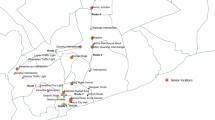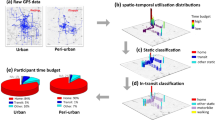Abstract
A personal air pollution exposure study, EXPOLIS, was accomplished in six European cities among 25- to 55-year-old citizens. In order to compare the exposure results and different microenvironmental concentrations between the cities it is crucial to know the extent and effects of the population bias that has developed in sampling procedure and the sociodemographic characteristics of each measured population sample. In each participating city a random Base sample of 2000 to 3000 individuals was drawn from the census and a Short Questionnaire (SQ) was mailed to them. Two subsamples of the Respondents of the mailed questionnaire were randomly drawn: Diary sample for 48-h time–microenvironment–activity diary and extensive exposure questionnaires, and Exposure sample for the same plus personal exposure and microenvironmental monitoring. Significant differences existed between the EXPOLIS cities in the population-sampling procedure. Population-sampling bias was evaluated by comparing the Respondents with the total city populations. The share of women and individuals with more than 14 years of education is higher among the Respondents than the overall population except in Athens. Men, younger (25–34 years old) and unmarried individuals were hardest to get to participate in the study at least in Helsinki. The two subsamples differ from Respondents in having more employed and higher-educated individuals. The largest sample bias occurred at the first and easiest step of responding to the mailed Short Screening Questionnaire, and not at the last and most demanding stage of participating in the exposure measurements. Exposure data from some of EXPOLIS cities can only be compared to other cities with caution considering their large population bias or different sample selections. However the selection bias is not necessarily a problem for analyses about predictors of personal exposures or analyses within a city.
This is a preview of subscription content, access via your institution
Access options
Subscribe to this journal
Receive 6 print issues and online access
$259.00 per year
only $43.17 per issue
Buy this article
- Purchase on Springer Link
- Instant access to full article PDF
Prices may be subject to local taxes which are calculated during checkout
Similar content being viewed by others
Author information
Authors and Affiliations
Corresponding author
Rights and permissions
About this article
Cite this article
ROTKO, T., OGLESBY, L., KÜNZLI, N. et al. Population sampling in European air pollution exposure study, EXPOLIS: comparisons between the cities and representativeness of the samples. J Expo Sci Environ Epidemiol 10, 355–364 (2000). https://doi.org/10.1038/sj.jea.7500101
Received:
Accepted:
Published:
Issue Date:
DOI: https://doi.org/10.1038/sj.jea.7500101
Keywords
This article is cited by
-
Monte-Carlo simulations of external dose contributions from the surrounding ground areas of residential homes in a typical Northern European suburban area after a radioactive fallout scenario
Scientific Reports (2020)
-
Influence of the migration of radioactive contaminants in soil, resident occupancy, and variability in contamination on isodose lines for typical Northern European houses
Scientific Reports (2019)
-
New approach for particulate exposure monitoring: determination of inhaled particulate mass by 24 h real-time personal exposure monitoring
Journal of Exposure Science & Environmental Epidemiology (2012)
-
Determinants of residential indoor and transportation activity times in Korea
Journal of Exposure Science & Environmental Epidemiology (2011)
-
The determinants of serum vitamin D levels in participants in a melanoma case–control study living in a temperate climate
Cancer Causes & Control (2011)



